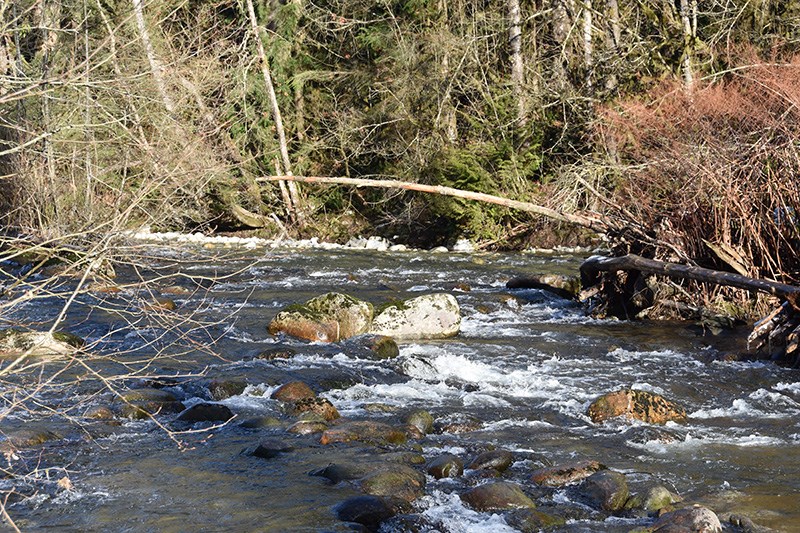Dangerous trees on the edge of creeks will be more carefully monitored in new developments once changes to Coquitlam’s zoning bylaw and Official Community Plan are approved,
Citing the desire to protect the public in severe windstorms, Coquitlam is making changes to how it manages trees in greenbelts next to creeks and the public has until Feb. 24 to weigh in.
Under the plan, developers planning subdivisions and requiring rezoning in areas next to creeks would have to do a five-year management plan, and pay for some of the costs of looking after trees in the riparian areas next to creeks.
These so-called Streamside Protection and Enhancement Areas (SPEA) that are left natural up to 30 metres from the high water mark of a stream or top of a ravine bank to protect fish habitat would be turned over to the city as part of the rezoning process.
The city would then do tree assessments, remove hazardous trees, replant trees and manage invasive species in the stream side buffer, work that is especially important the first five years after development when forest edges are newly exposed.
“Moving forward with this approach, we’ll have the land in city ownership so we can manage those areas comprehensively,” explained Chris McBeath, senior planner for the city.
Developers would still be responsible for tree management under the Riparian Areas Regulation (RAR)— a provincial regulation.
As well, development applications involving both a rezoning and a water protection development permit would be required to do a tree assessment, a five-year management plan for the SPEA and do a cost estimate of the work needed over the five-year period.
The developer would also be expected to make a voluntary financial contribution to help pay for the work.
There would also be fencing, signage and a covenanted Root Protection Buffer put in place to further protect the trees.
The changes follow a Dec. 21, 2018 windstorm that knocked down several trees and prompted more than 70 inquiries to the city.
McBeath said the windstorm wasn’t the impetus for the new tree management plan but was one of the factors that led to the city wanting a strategy to guard against hazardous trees.
“I don’t know that it’s a specific event, we want to make sure people coming forward know what to expect.”
Although the strategy applies city wide, it’s mostly likely to affect development near creeks on Burke Mountain, McBeath acknowledged.



